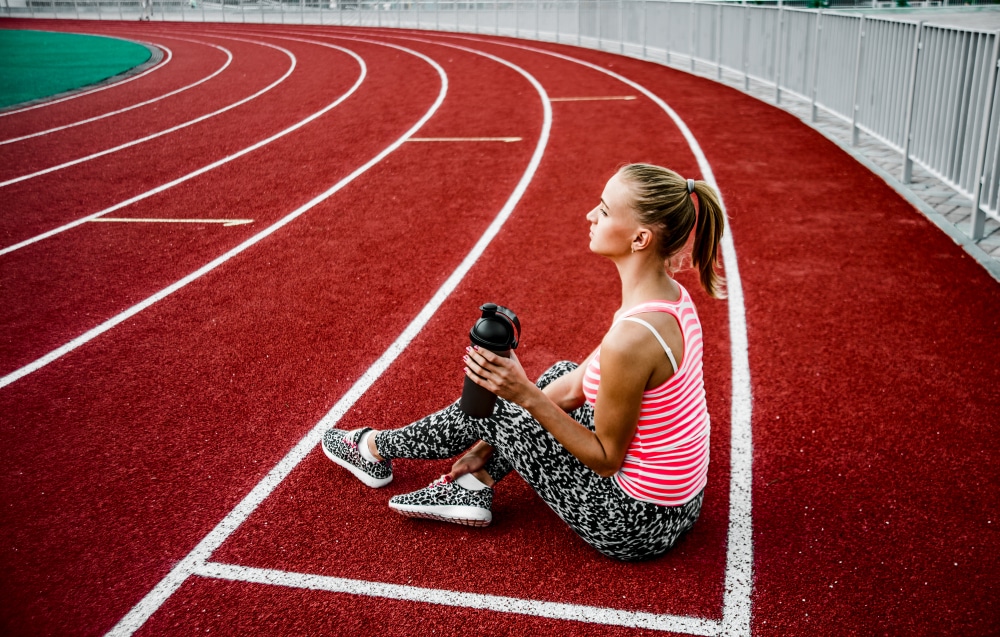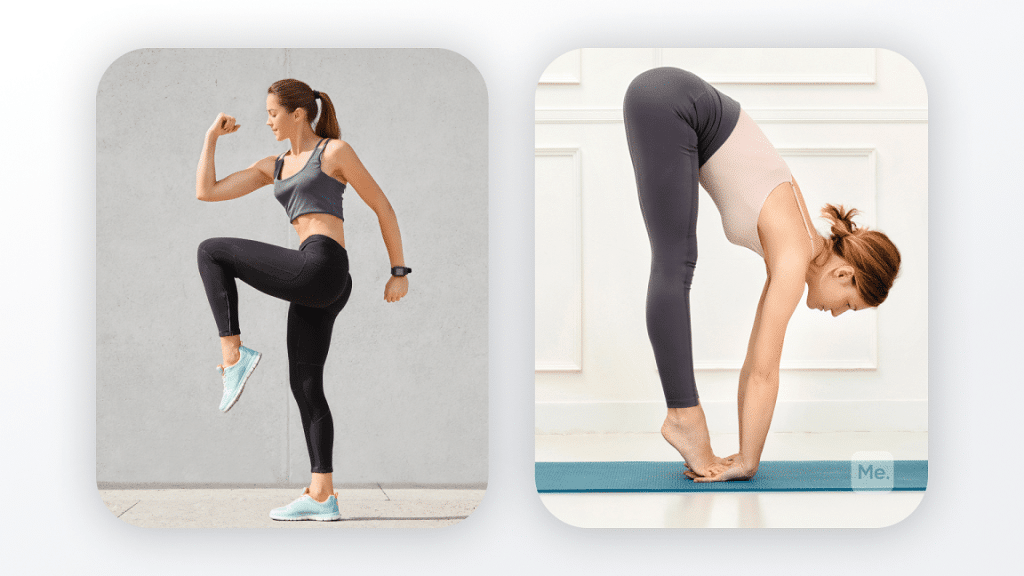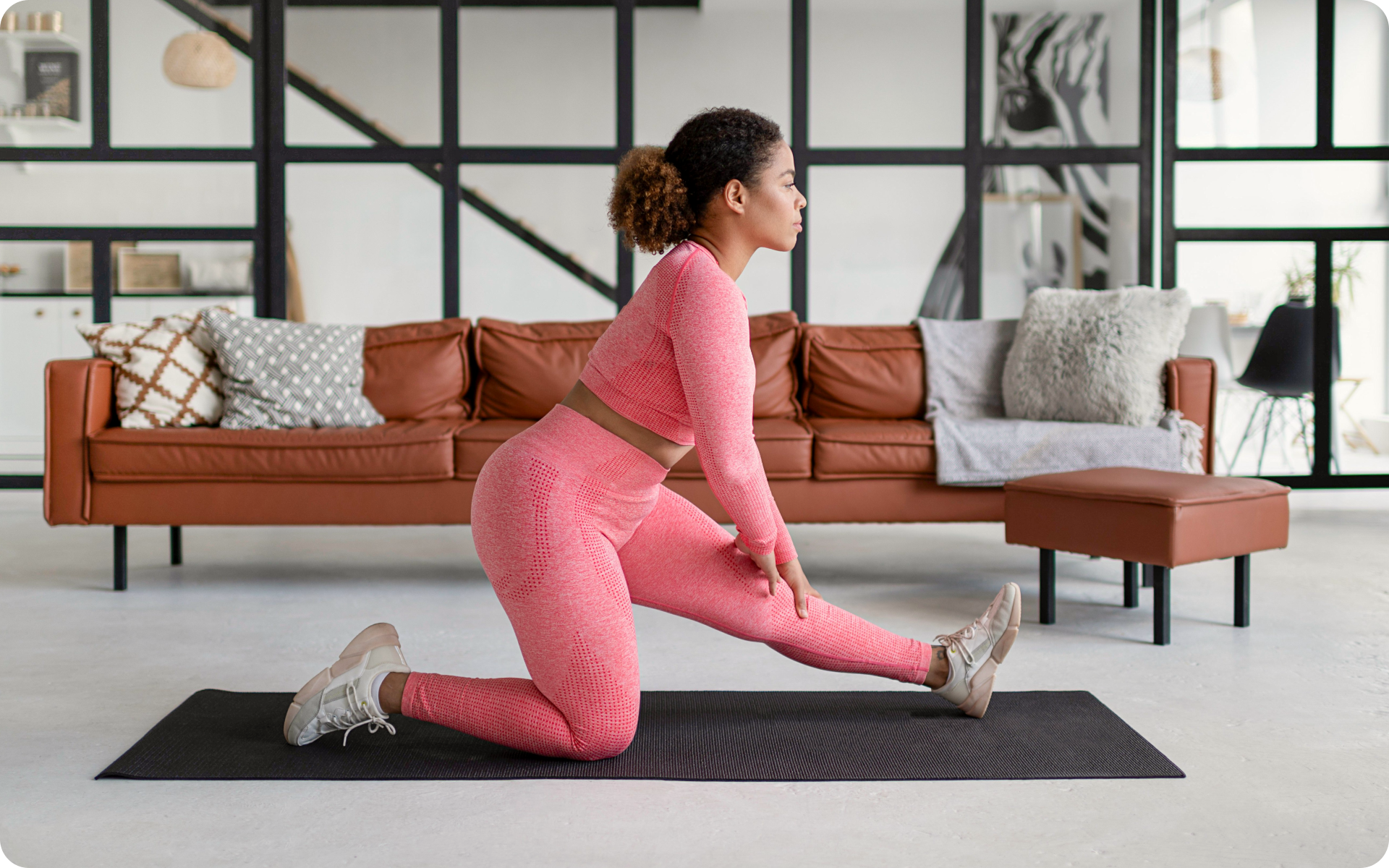When you have been following a weight loss program such as dieting and working out, it is natural that you would want to check your progress by measuring your weight. However, pounds recorded on the scale is not a perfect reflection of whether your efforts are bearing fruits or not. For instance, you may be losing inches but not weight, so here is more on how to measure for weight loss.
Healthy weight loss will not have you tipping your weighing scale soon after you begin your program. Other than actually shedding pounds, there are numerous other internal and invisible benefits that you may not know are happening as a result of your weight loss program. For instance, your heart may become more efficient leading to better blood circulation, and you may be growing more mitochondria, among others (3). Note that you may lose inches from your body, but the scale weight remains the same when you lose fat and gain muscles.
Read More: How Often Should You Eat To Lose Weight: Settling This Debate Once And For All
How To Measure Your Body For Weight Loss?
The results of healthy eating and working out can be seen by the number of pounds shed, body fat percentage, centimeters lost in specific parts of the body, and the difference in how clothes fit. Nonetheless, you will still need to know how to use a weighing scale to keep track.
1. Using The Weighing Scale
The easiest and most accessible solution to how to measure for weight loss is using the scale.
Factors To Consider When Measuring On The Scale
- Some sources recommend weighing yourself monthly to give your body adequate time to respond to the efforts you are putting to attain your weight loss goals (5).
- Since weight on the scale fluctuates based on food weight gain, water weight gain, and muscle gain, you should weigh yourself before eating. After the meal, the body will gain weight from something that will be eliminated through digestion several hours later. Verywellfit recommends checking your weight on the scale first thing in the morning (5).
- The body is about 60% water; therefore, fluctuations in your hydration levels may change the scale weight (3). Dehydration or too much salt intake may cause the body to retain water, causing the scale weight to increase. Also, most women retain water during menstruation cycles, which may make the number to change (3).
- Adding muscle, which is denser than fat and takes less space, may increase your scale weight even when you are slimming down (3).
Disadvantages Of Using The Scale As The Only Measure For Weight Loss
When talking about weight loss, the focus is on body fat. However, scales:
- Measure everything: muscle, fat, organs, bones, and even what you have consumed, i.e., food or water (5).
- Do not tell you what you have gained or lost, e.g., fat or muscle, or small changes in your body composition (5).
- May determine how you feel about yourself, and if the numbers are not as you expected, it may affect your body image and self-confidence.
This confirms that the number on the weighing scale does not always tell you everything that there is to know about the weight loss progress; therefore, it is not the best way to track weight if used alone. It should be combined with measurements of body fat.
Lean and toned up body isn’t just a far-fetched fantasy. Check out the BetterMe app and watch it propel your weight loss journey into high gear!
2. Body Fat Percentage
It is essential to know your body fat percentage because it will give you a better idea of the amount of fat you need to lose and whether your program is effective. BMI alone is not an accurate measure of your fitness and physique. For example, the BMI of a bodybuilder with standard height and weight measurements may rank him overweight even if his body fat is very low. Body fat percentage can be measured using methods such as (6).
- Body Circumference Measurements discussed later.
- Bioelectrical Impedance Analysis (BIA)- electrodes are placed on your skin to detect how your body responds to small electrical currents.
- Skinfold calipers- measures the thickness of the fat underneath the skin at particular body locations.
- Dual-Energy X-ray Absorptiometry (DXA) – utilizes X-rays of two different energies to approximate the body fat percentage.
- Hydrostatic weighing or hydrodensitometry or underwater weighing-estimates body composition based on its density.
- Online calculators.
Things To Consider When Measuring Fat Percentage
It is recommended that you (3):
- Check your body fat once a week or after a fortnight with the same expert’s assistance every time because professionals may use different ways; therefore, use the same one for consistency.
- Measure under a consistent environment, especially when using a bioelectrical impedance scale because food intake, hydration, and skin temperature may affect the measurements.
- Always record the numbers in your calendar or journal. If 20% of your weight is body fat and weigh 140 lbs, then 28 lbs are fat, and the remaining 112 lbs are lean tissue. Therefore, if you check weekly, you will know if you are losing fat or gaining muscle.
The average body fat percentage is between 25% and 31%, and 18% and 24% for women and men, respectively.
3. Taking Body Measurements
If you are scared of the scale and do not have the means for measuring body fat, then the other way on how to measure yourself for weight loss tracking is to take your measurements. Remember, people lose fat in different places and in different order, and that losing inches without the scale tipping is a sign that you are losing fat and gaining muscle, which is great because lean muscle makes your body slimmer and tighter.
Advantages Of Taking Body Measurements
Measuring specific parts:
- Does not require fancy equipment or professional help as long as you follow instructions.
- It gives you a clear idea of where you are losing weight, for instance, thighs, bust, waist, arms, or belly.
- Helps reassure you that you are making weight loss progress, even if you’re getting there slower than you expected.
How To Take Body Measurements?
Put on tight-fitting clothes, or no clothes at all if you are comfortable that way.
-
Bust
One of the must-take female measurements is the bust. This is taken by placing one end of the tape at the nipple line, which is the fullest part of your breast. Wrap the rest of the tape around your back and below the arms to join the first end. The tape should not be pulled too tight.
-
Chest
Standing with your feet together and torso straight, record the measurement of the area just under your bust or the widest part around the bust. How to measure chest size women for weight loss is done by placing tape where your bra line goes and getting its circumference.
-
Calves
Take the tape around the largest part of each calf, i.e, halfway between the knee and the ankle.
-
Thigh Measurements
Measurements should be taken around the biggest part of each thigh or the midpoint between the lower part of the glutes and the knee’s back.
-
Waist
Place the tape at the smallest part of your waist or a half-inch above your belly button i.e. your natural waist.
-
Hips
Measure around the biggest part of the hips or glutes, or bottom. For accuracy, look in the mirror while standing sideways and ensure the tape is parallel to the floor.
-
Arms
Stand straight and relax your arms. Find the center of the elbow of one arm and the shoulder bone. For the forearm, place the tape around the largest part of the arm below the elbow. Upper arm measurements are taken around the largest part of each arm above the elbow.
-
Abs
With the torso straight but relaxed and standing with feet together, measure the widest part of the torso, usually around your belly button.
-
Stomach
The belly button is the measuring point of your stomach, so place the tape at this point and rotate around the back to the starting position.
-
Neck
With your head straight, measure your neck’s circumference.
-
Shoulders
Rest arms on the sides, then have someone measure from one end to the next.
-
Quad
Standing straight, rest your weight on the leg that you are not measuring, while the other leg to be measured should be relaxed. Measure the fullest part of your upper leg.
Looking for a way to break the vicious cycle of weight loss and tone up all the jiggly parts? Watch the extra pounds fly off and your muscles firm up with the BetterMe app!
Things To Consider
Several factors on how to properly measure for weight loss men and women should be considered. For instance:
- The same clothes you wore the first time should be worn every time you take measurements for consistency.
- When taking the measurements, your feet should be together, and your body relaxed. Pull the tape measure to sit on the surface of the skin, but should not compress the skin.
- The tape should be level around your body and parallel to the floor.
- Use a flexible, inelastic (non-stretchable) measuring tape, for example, a cloth measuring tape or one particularly made for taking body measurements. Avoid metallic tape measures.
- Healthymummy recommends taking the measurements first thing in the morning before consuming anything, and the same conditions should be applied every time you re-measure for trustworthy results (2).
- Breath as usual, and do not suck in to get a better number because this will not be a true reflection of your measurements.
- Observe yourself in a mirror while measuring to make sure that the tape is straight.
- For measurements that you cannot comfortably take yourself, like shoulders, ask your partner or fitness trainer to do it for you for accuracy. Use the same side each time you take measurements around the limb.
- Take the measurements at least twice for accuracy, then calculate the average of the two outcomes to get the final number.
- Create a progress chart where you record each of the above measurements every time to see if you are losing inches.
It may be impossible to lose weight only where you want, for example, focusing on making the thighs smaller and retaining the breast size or keeping your glutes as they are but losing your spare tire. Other than dieting and working out, your genes may affect your body shape; therefore, you need to follow a weight loss plan and simply focus on sustainable progress.
Normal Body Measurements
Everyone has a different body shape and size. The average shoulder-width for women is around 17 inches when measured along the back from the top of one armpit to the other. Also, for women, the hip line is usually the broadest part of the body, while for men, the broadest part may be the shoulder line. The different types of bodies determine where extra fat is stored; therefore, men should know their body types and women their shapes. Women body shapes include:
- Straight or rectangular shape: waist circumference is less than 9 inches of the hips or chest.
- Apple-shape: broader shoulders and narrower hips.
- Hourglass: hips and chest are almost the same, with a narrower waist.
- Pear shape: hips are larger than the chest.
Body types for men include:
- Endomorph: Higher body fat, big bones, and a slower metabolism making it hard to lose weight.
- Ectomorph: Lean and may even have trouble gaining weight due to a faster metabolism.
- Mesomorph: More muscular and may have an easier time losing fat and gaining muscle.
Read More: Does Waist Size Increase With Muscle: Unpacking The Truth
Tracking Your Weight Loss After Taking Measurements
Other than manually reviewing the progress of the monthly measurements in your journal, you should enter these numbers into an online body fat calculator to determine your body fat percentage. Use the body fat percentage number obtained to calculate the muscle pounds versus fat pounds.
- Pounds of fat=Weight * body fat percentage
- Lean muscle mass= Weight – Pounds of fat
You will be on track if you are losing pounds of fat.
4. Gauging By How Clothes Fit
Your weight loss goal may be to go two clothing sizes down; therefore, in such a case, you can measure your progress by how the clothes fit (5). To know if you are on the right path of achieving your objective:
- Take a photo of yourself in a bathing suit, then keep it in your journal. Every month, take a new picture in the same clothing and compare it to see any changes.
- Alternatively, select one pair of tight pants, then try them every four weeks to see how they fit, then note down where they feel loose, tight, and how you feel when you put them on.
Since everyone’s body is different, and there is no standard sizing among manufacturers, the waist size and pant size do not correlate. Therefore, the amount of pounds you lose does not automatically translate to a clothing size or more down.
FAQs
-
How To Measure Portion Sizes For Weight Loss?
If you cannot memorize the list of cups, ounces, and tablespoons in a portion, compare the serving sizes of foods to familiar things. For example, a single serving of veggies or fruit is about the size of your fist, while that of steamed rice is the size of a cupcake wrapper. To determine the amount of food in a serving, look at the nutrition facts label, and measure it (4).
-
How To Measure Macros For Weight Loss?
Measuring macros involves knowing how many calories are in each gram of the three primary macronutrients (7). For instance, one gram of:
- Fat has 9 calories
- Carbohydrates contains 4 calories
- Protein has 4 calories
This knowledge will help you calculate macros depending on the weight loss program that you are following, and the amount of calories to be consumed and burned to lose weight.
Final Thought
Combining the different ways on how to measure for weight loss will help you track your progress effectively and give a clear, accurate picture of what is happening to your body. Be patient with yourself because significant changes will be noticeable after months, and they may keep fluctuating due to various factors. Remember, following a healthy lifestyle is the only way to lose and maintain ideal weight; therefore, ensure a medical expert approves the program you follow.
DISCLAIMER:
This article is intended for general informational purposes only and does not address individual circumstances. It is not a substitute for professional advice or help and should not be relied on to make decisions of any kind. Any action you take upon the information presented in this article is strictly at your own risk and responsibility!
SOURCES:
- How To Take Body Measurements For Weight Loss (2019, aftannfit.com)
- How To Take Measurements (healthymummy.com)
- How to Track Your Weight Loss Progress (2020, verywellfit.com)
- Portion Size and Weight Loss (2020, webmd.com)
- Taking Body Measurements During Weight Loss (2019, verywellfit.com)
- The 10 Best Ways to Measure Your Body Fat Percentage (2018, healthline.com)
- This Is Exactly How To Count Macros To Lose Weight (2019, womenshealthmag.com)
- Which measurements should you take to track your weight loss? (2019, garciaweightloss.com)


















